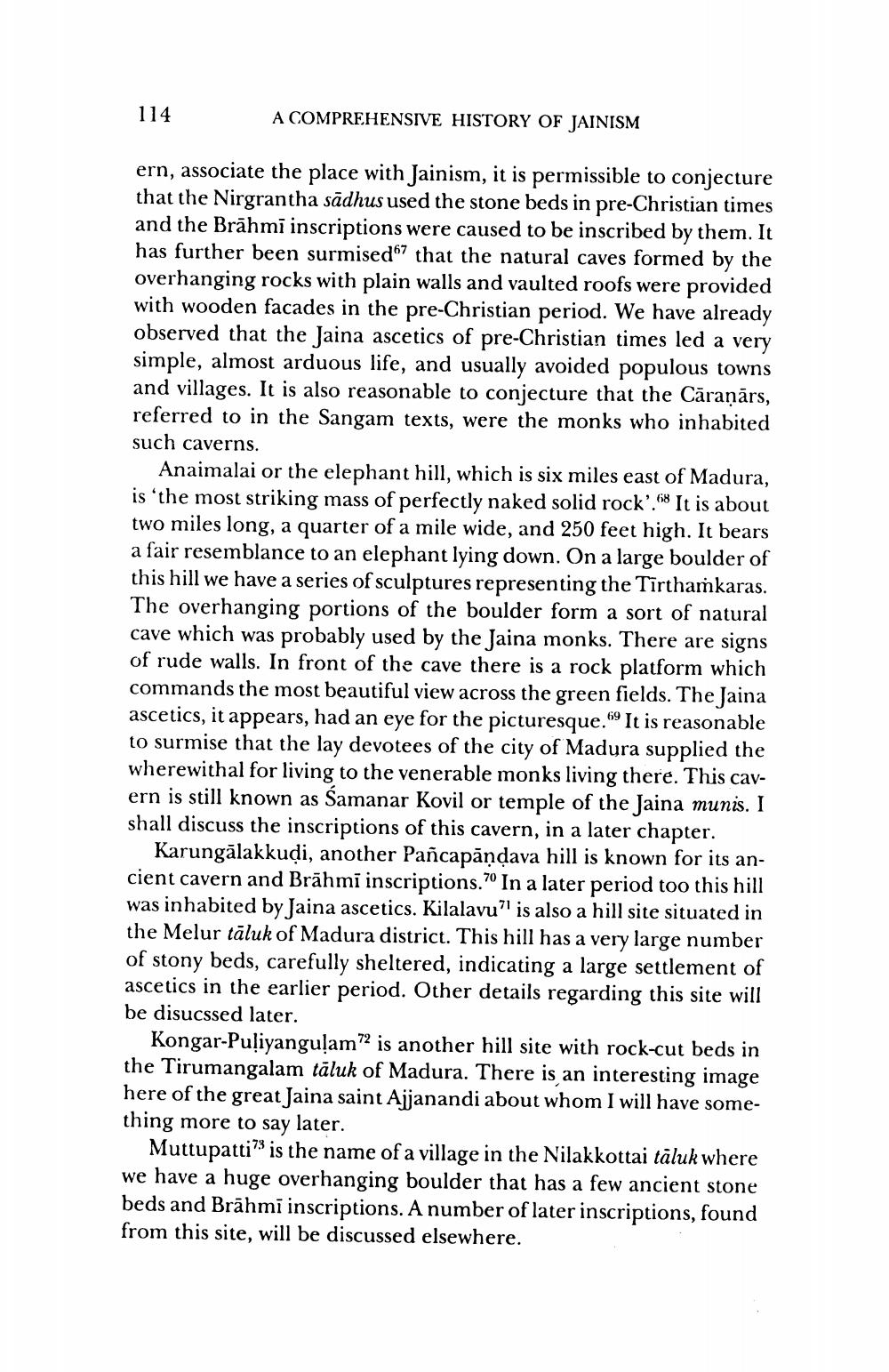________________
114
A COMPREHENSIVE HISTORY OF JAINISM
ern, associate the place with Jainism, it is permissible to conjecture that the Nirgrantha sādhus used the stone beds in pre-Christian times and the Brāhmi inscriptions were caused to be inscribed by them. It has further been surmised that the natural caves formed by the overhanging rocks with plain walls and vaulted roofs were provided with wooden facades in the pre-Christian period. We have already observed that the Jaina ascetics of pre-Christian times led a very simple, almost arduous life, and usually avoided populous towns and villages. It is also reasonable to conjecture that the Cāraṇārs, referred to in the Sangam texts, were the monks who inhabited such caverns.
Anaimalai or the elephant hill, which is six miles east of Madura, is the most striking mass of perfectly naked solid rock'.8 It is about two miles long, a quarter of a mile wide, and 250 feet high. It bears a fair resemblance to an elephant lying down. On a large boulder of this hill we have a series of sculptures representing the Tīrthamkaras. The overhanging portions of the boulder form a sort of natural cave which was probably used by the Jaina monks. There are signs of rude walls. In front of the cave there is a rock platform which commands the most beautiful view across the green fields. The Jaina ascetics, it appears, had an eye for the picturesque. It is reasonable to surmise that the lay devotees of the city of Madura supplied the wherewithal for living to the venerable monks living there. This cavern is still known as Samanar Kovil or temple of the Jaina munis. I shall discuss the inscriptions of this cavern, in a later chapter.
Karungālakkudi, another Pañcapāņdava hill is known for its ancient cavern and Brāhmi inscriptions. ' In a later period too this hill was inhabited by Jaina ascetics. Kilalavu" is also a hill site situated in the Melur tāluk of Madura district. This hill has a very large number of stony beds, carefully sheltered, indicating a large settlement of ascetics in the earlier period. Other details regarding this site will be disucssed later.
Kongar-Puliyangulam 72 is another hill site with rock-cut beds in the Tirumangalam tāluk of Madura. There is an interesting image here of the great Jaina saint Ajjanandi about whom I will have something more to say later.
Muttupatti" is the name of a village in the Nilakkottai tāluk where we have a huge overhanging boulder that has a few ancient stone beds and Brāhmi inscriptions. A number of later inscriptions, found from this site, will be discussed elsewhere.




